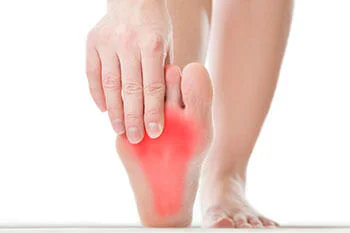Table of Contents
Introduction
A bunion is a bony bump that can develop on the side of an individual’s foot. Most commonly, the bunion develops on the inside of the foot near the big toe. However, a bunionette,, or tailor’s bunion, may develop on the outside of the foot near the pinky toes. Patients often ask about what exactly causes a tailor’s bunion. The answer is that there are a wide variety of different nuanced causes of a bunionette. First, a bunionette might develop when the feet do not function properly, causing the metatarsal bones to essentially separate. Second, the structure of the feet may change when an individual engages in new physical activities and sports. Third, bunionettes might also be caused by a hereditary disposition that is passed down through genetics. If you are someone living with a bunionette, it is suggested that you contact a podiatrist today for an appointment.
If you are suffering from bunions, contact one of our podiatrists of Integrative Foot & Ankle Centers of Washington. Our doctors can provide the care you need to keep you pain-free and on your feet.
Why Do Bunions Form?
- Genetics – Susceptibility to bunions are often hereditary
- Stress on the feet – Poorly fitted and uncomfortable footwear that places stress on feet, such as heels, can worsen existing bunions
How Are Bunions Diagnosed?
How Are Bunions Treated?
- Refrain from wearing heels or similar shoes that cause discomfort
- Select wider shoes that can provide more comfort and reduce pain
- Anti-inflammatory and pain management drugs
- Orthotics or foot inserts
- Surgery


